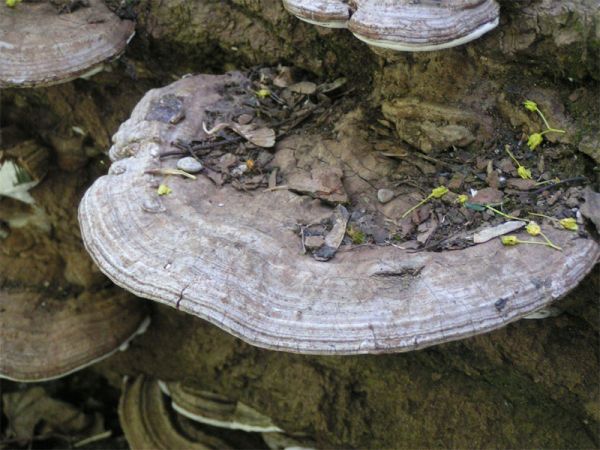 Ganoderma applanatum (Basidiomycota, Homobasidiomycetes, Polyporales, Ganodermataceae)
Ganoderma applanatum (Basidiomycota, Homobasidiomycetes, Polyporales, Ganodermataceae)photo by Eric Steinert in Munich, Germany, GNU Free Documentation License, Wikipedia
| Fungi | ||
| Fungi | Fungi |
| Fungi | Fungi | Fungi | ||||
| Time |
|
Archaea
├─Eubacteria
└─Eukarya
├─Chlorobionta
└─┬─Fungi
│ ├─Chytridomycota
│ └─┬─┬─Zygomycota
│ │ └─Trichomycota
│ └─┬─Basidiomycota
│ │ ├─Ustilaginomycetes
│ │ └─Hymenomycetes
│ └─Ascomycota
│ ├─Saccharomycotina
│ └─Pezizomycotina
└─Metazoa
├─Deuterostomia
└─Protostomia
|
Lists |
 Ganoderma applanatum (Basidiomycota, Homobasidiomycetes, Polyporales, Ganodermataceae)
Ganoderma applanatum (Basidiomycota, Homobasidiomycetes, Polyporales, Ganodermataceae)photo by Eric Steinert in Munich, Germany, GNU Free Documentation License, Wikipedia |
A. Glossary of terms and abbreviations.
A B C D E F G H I J K L M N O P Q R S T U V W X Y Z
B. Taxon Index: alphabetical list of taxa.
A B C D E F G H I J K L M N O P Q R S T U V W X Y Z
C. References: literature citations by author.
A B C D E F G H I J K L M N O P Q R S T U V W X Y Z
The Fungi are one of the three major kingdoms of multicelluar eukaryotes. For a long time classified with plants (for example, like plants but unlike animals, their cells of fungi have cell walls), they are now recognised as a distinct major group of organisms. in the Whittaker-Marguelis system of classification of life they are one of the five kingdoms (along with paraphyletic Monera and Protista, as well as plants and animals).
Although superficially resembling plants, in that they are immobile, rooted in place, lacking organs, senses, circulatory, nervous, and other such systems and so on, they feed in a very different way. Unlike plants, fungi do not make their own food through photosynthesis, but like animals derive nutrients from their environment (heterotrophy). Fungi absorb their food while animals ingest it; and rather than feeding on other living organisms, most fungi are decomposers of dead organic matter (like most bacteria).
Evolutionarily, Fungi are now considered to be more closely related to animals than to plants, both are included in a group called Opisthokonta. They seem to have been insignificant before the rise of terrestrial ecosystems in the Silurian and Devonian, but soon made up for that shortcoming by becoming ubiquitious in most terrestrial ecosystems, with many species having an essential symbiotic relationship with plants (Mycorrhizal symbiosis). MAK061005
page MAK120115 (Creative Commons Attribution)
Google search box courtesy of Ask Dave Taylor